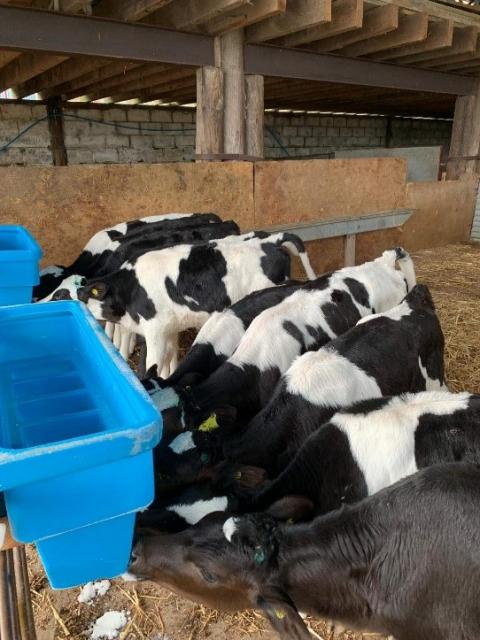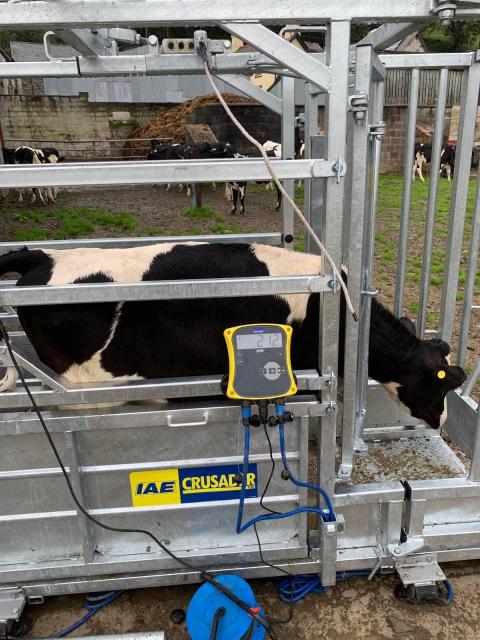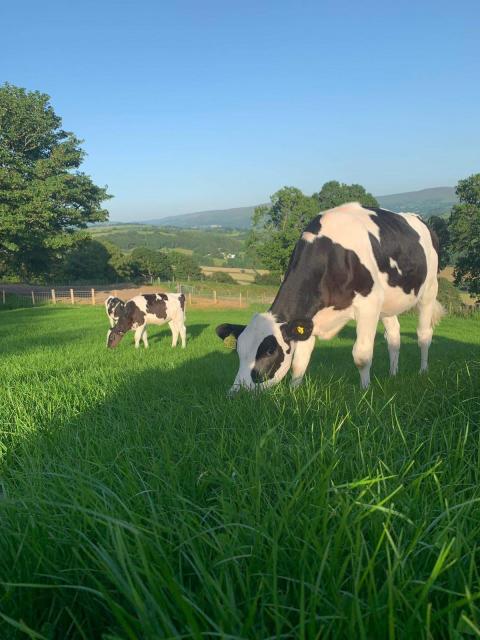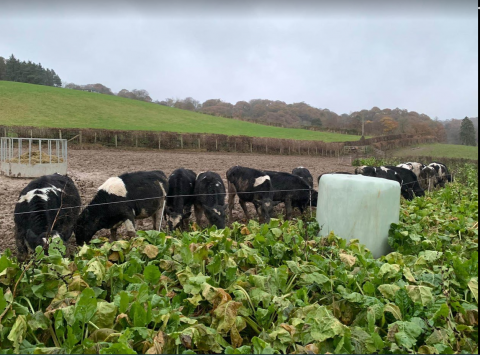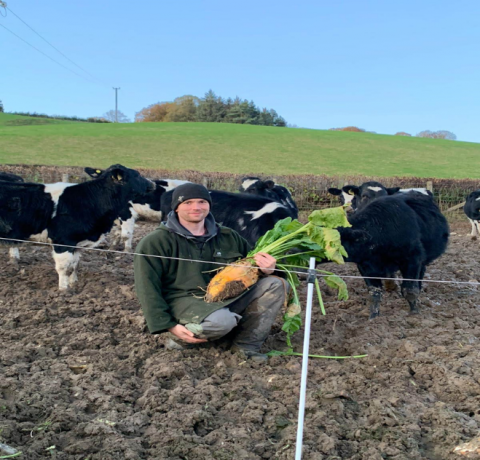Llys Dinmael - Project Update
Rearing dairy heifers is often a class of livestock that is overlooked and undervalued within Welsh dairy herds, as the main focus of the dairy business historically and quite naturally will be the milking herd. However, recent studies and evidence has shown that well-grown heifers that calve down at 23/24 months old are the most profitable animals within a long-term dairy business strategy. The average cost of rearing a dairy heifer can vary dramatically from £1,000 to £3,000.
Very little is understood about the management of dairy heifers within a highly stocked rotational grazing system. The main principles in terms of utilisation and management will be based on the grazing practices of the mature dairy herd. This project will monitor heifer growth rates against pre and post grazing covers to gather a better understanding of how Holstein Friesian heifers can be grazed within a rotational cell grazing system. The main aim is to maximise animal performance on a low-cost feeding regime.
Dafydd Jones of Llys Dinmael has purchased 20 dairy Holstein Friesian heifers at 4 weeks old. He aims to rear until calving down and sell as fresh in-milk heifers. Dafydd is a non-milk producer looking to add another enterprise to his business, and caplitalise on the progress already achieved by rotationally grazing sheep on the upland farm. From changing his grazing management, Dafydd has realised that the farm can grow an abundance of grass and would like to utilise this further. The heifers will be outwintered on fodder beat during their first winter in order to keep bedding, labour and housing costs as low as possible.
Figure 1. Heifer calves feeding on powder milk in an adapted lambing shed.
Figure 2. Heifer calves being weighed on 10 August 2019.
Figure 3. Heifers at grass on 5 September 2019.
Figure 4. Heifer feeding on Geronimo fodder beet 16 November 2019.
The calves have been weighed monthly since arriving at Llys Dinmael. Following weaning off milk powder substitute and concentrate, the heifers have been on grazed grass only from the end of July to the end of October. The heifers were fed via 2 day shift on a rotational grazing system with pre-grassing cover of 2,500-2,700kg/ha and a residual cover of 1,500kg/ha. Fresh grass samples were taken to analyse quality and mineral availability, which led to a mineral bolus being given due to low levels of copper being identified. From here, they transitioned gradually on to fodder beet by spending 21 days grazing fodder beet by day and grass by night. Again, no bought-in concentrate had been fed during this period.
Two hectares of Geronimo variety fodder beet was precision sown in April at a seed rate of 100,000 seeds/ha at 50cm spacing’s. Yield calculations suggest that DM value is 27 tonnes/ha whereas the UK average is 20 tonnes/ha. Given Llys Dinmael’s height above sea level, this is pretty impressive.
The heifer calves are self-feeding behind an electric fence at the rate of 0.97 meter of fodder beet per day within a 40m wide strip, supplemented by round bale silage fed from a ring feeder. There is sufficient fodder beet available until March. Heifer growth rate over the last month has been 0.89kg DLWG.
Average weight of the calves at the last weighing on 16 November was 246kg, the heaviest was 281kg and the lightest was 202kg.
Daily liveweight gain since the last weighing on 18 October has averaged 0.89kg DLWG entirely on home grown forage diet of ad lib fodder beet and round bale silage at 6kg/head/day.
There is now an opportunity to manage these heifers into separate groups, separating those that have gained weight more quickly to possibly be bulled at an earlier age than those progressing less quickly. However, this may not be practical given if these heifers are bulled in May 2020 as they will calve down the following March in the middle of lambing in 2021. Despite their progression it will still be more manageable to bull these heifers in September 2020 in order to calve in June 2021, and to capitalise on increased prices of summer and autumn calving in milk heifers. Growth rates at Llys Dinmael have highlighted how important it is to manage the daily liveweight gains of heifers if calving at 24 months or 28 months and what the end objective is. A balance must be struck between target weights, rearing costs and achieving the optimum end value for a freshly calved in-milk heifer at market.
Figure 5. Dafydd showing an example of this year’s Geronimo fodder beet variety.

